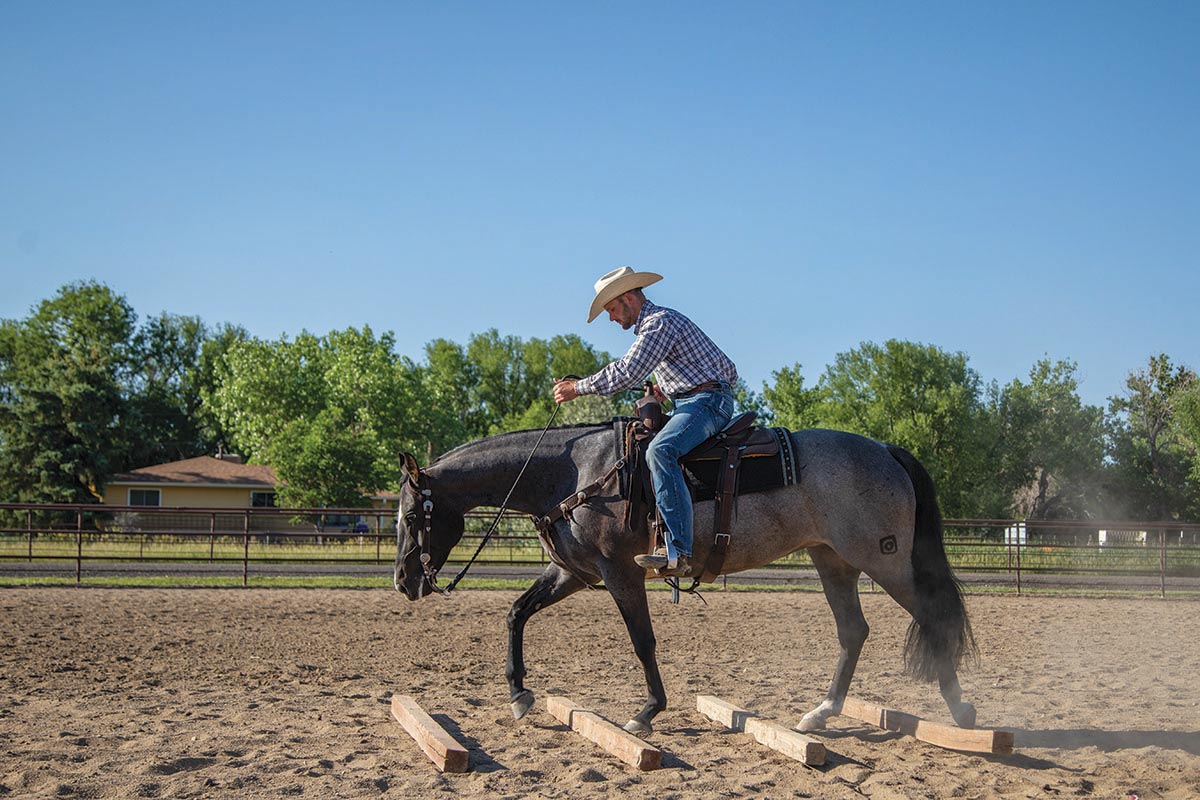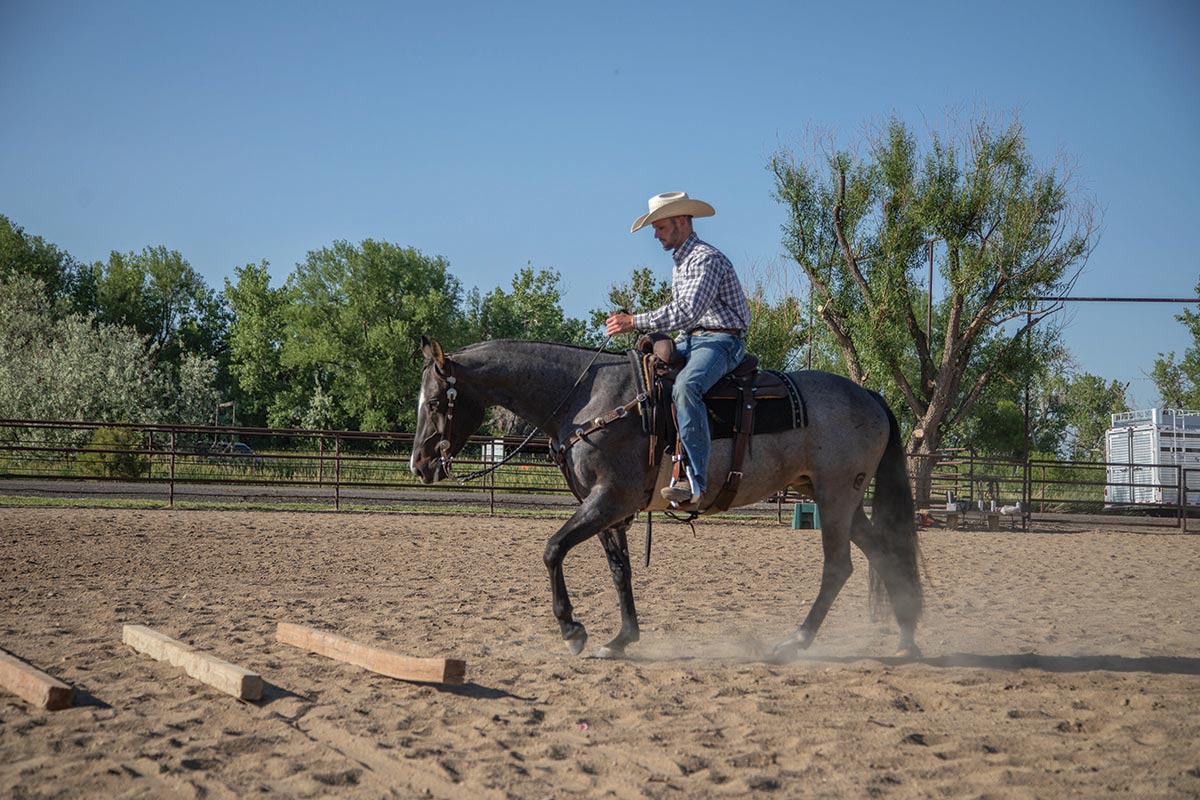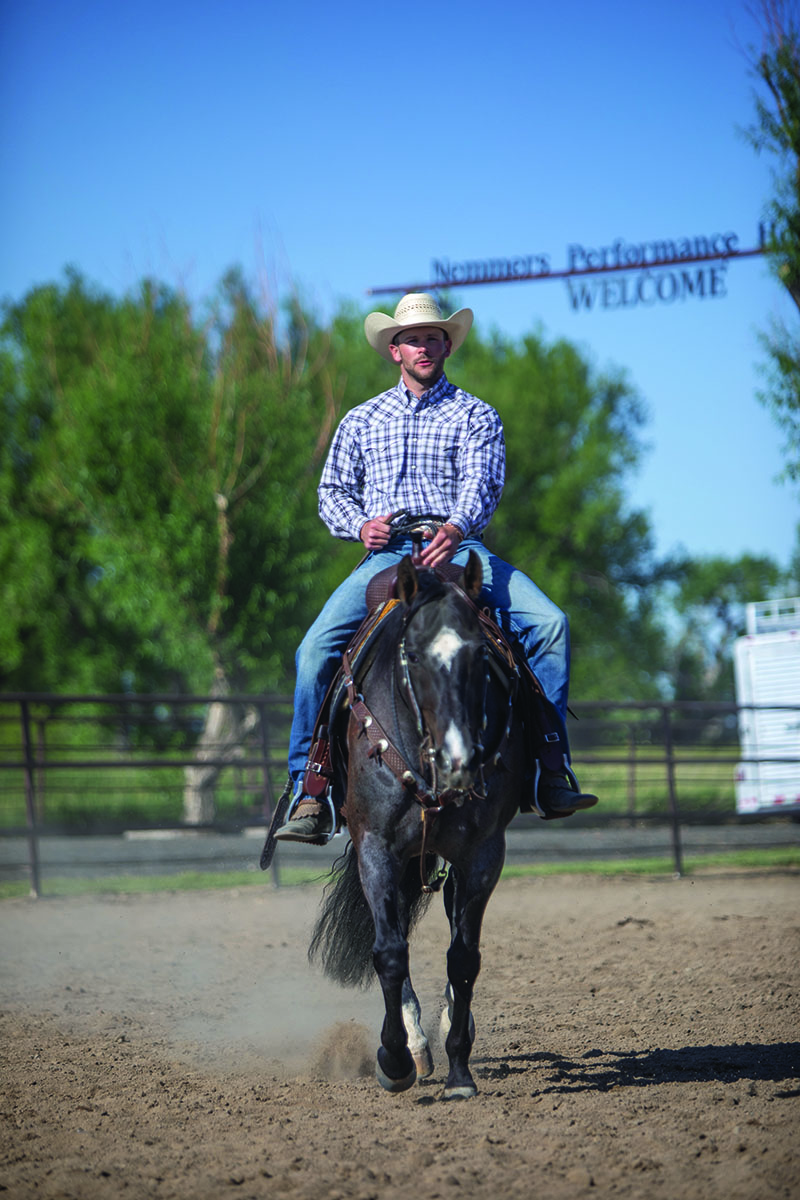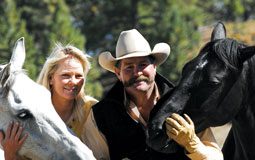Will your horse ride over logs easily and with interest? In popular ranch riding classes, log obstacles are part of every pattern. Most often, the American Quarter Horse Association (AQHA) patterns call for walking or trotting over logs. A few patterns also call for lope-overs or a sidepass over logs that are wider and taller than those found in traditional trail classes.

To master this show obstacle, you must know how to regulate your horse’s stride and use precise body cues that keep him moving forward without rushing. Your horse must be precise, too—only one hoof may land between each log.
Here, champion-earning trainer Julian Nemmers coaches his son, Justin, as he practices his pole-crossing protocol. The Nemmers family ranch is in Longmont, Colo., where Julian and Nancy Nemmers’ amateur, non-pro, and youth clients have received World Champion titles and honors at the national level.
Julian Nemmers shares his coaching tips to help you walk and trot over logs in the show ring after you’ve practiced at home.
“In ranch riding, you have to ride aggressively and forward,” says Nemmers. “If you’re complacent, you won’t score well. You have to be in a hurry to get to your next transition or obstacle, but your horse can’t look in a hurry. To find that balance, you have a lot of practice to do at home before the show.”
The Set-Up
Logs for ranch riding classes are set wider than poles in trail classes. The logs are often natural, cut trees or round fenceposts that are natural in color. The precise distance between logs isn’t mandated, and riders may not know what spacing to expect until they approach the obstacle in the show ring.
Logs are set with 26- to 30-inch spacing if horses are to walk through. For trot-overs, the poles may be spaced anywhere from 36 to 42 inches apart.
Homework on Riding Over Logs
Nemmers suggests placing logs or poles around your riding area and changing their placement and distance daily. Your horse needs to learn that the obstacle will be different.
Small tree trunks or round fence posts work well. You can also change the height of your logs by stacking 6-inch-diameter fence posts. With two on the bottom and one resting on top, your horse will have to step higher than usual.

When it’s time to ride, approach the logs with your horse aimed at the middle. Since the logs are often shorter than standard ground poles, your horse could step around and miss the obstacle if he starts at an angle.
Stop your horse and wait for him to look forward at the logs. In a show, you won’t stop before you ride over the logs, because it would be considered a break of gait.
To practice, though, Nemmers says he often halts his horses to encourage their curiosity and to keep them from rushing. Judges like to see ranch horses with forward-aimed ears, looking interested and alert.
Cue your horse to move forward by raising your reining hand and shifting it slightly forward (about 5 inches). Keep your lower leg in its usual riding position but stand and shift your shoulders forward. Look at the slots between the logs to help your horse move in the direction you want to go. You can hold the saddle horn as you lean forward.
Keep this position consistently until you have crossed all the logs. Only when your horse’s last foot has exited the obstacle should you lean back and sit down.

Trot With Cadence Over Logs
Trotting across the poles means learning how to adjust your horse’s stride to fit the distance between the logs.
“When you’re trotting, look past the obstacle and not down at the logs,” says Nemmers. “That will help keep the horse moving forward. I may feel that I need to speed up to get across, or I may feel that we’re moving too fast, and I need to soften and slow my horse just a little. Do make sure to allow your horse to look forward so he can see the obstacle that’s coming. Don’t collect up so much that your horse can’t see.”
If you feel like you need to move more quickly, move your reins down toward your horse’s head. Increase your leg pressure, too. If you need to slow, pick up your hand slightly. Even a half-inch movement should slow your horse’s speed. Repeat the obstacle often and allow your horse to trot for several strides before riding over the logs.
“With repetition, you’ll learn how to control your horse’s gait,” says Nemmers. “The more you go over different configurations and get out in a pasture setting will be a big benefit, too. Work where it’s natural.”
Showing Success Over Logs
When it’s show time, make sure your horse looks alert, forward and interested in every obstacle. Your horse shouldn’t have memorized a pattern, but he should be willing to listen to where you want to go.
When it comes riding over logs, the judge wants to see a horse that’s aware of where his feet are going and moves through with ease. While there’s no set penalty for ticking a log, it’s up to the judge to score the whole maneuver as a plus .5, 1 or 1.5 or to deduct on the same scale.
Make sure not to break gait and move through the log obstacle with knowledge of your horse’s stride and cadence. If you’ve worked on this at home, showing will be a natural step.
Special thanks to Justin Nemmers on Boxo Heavens Firefly. With Justin riding, the mare won bronze at the 2020 AQHA World Show and was the NSBA World Champion at AQHA World for ranch riding, both in the amateur divisions.
This article about riding over logs in ranch riding appeared in the June 2021 issue of Horse Illustrated magazine. Click here to subscribe!





